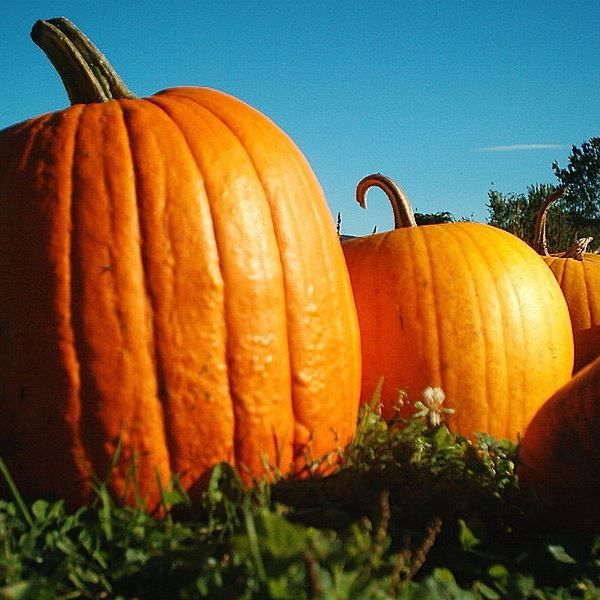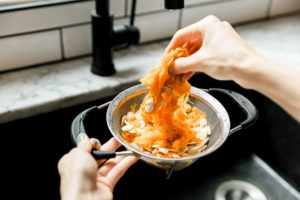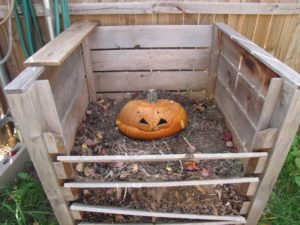Carve, Compost or Cook? What to Do with Pumpkins After Halloween
Halloween is almost here, heralded by the most enduring symbol of the holiday, the ubiquitous Jack-o’-lantern. Carved or natural, pumpkins are displayed for their beautiful colors, textures and sizes. But they are useful for more than décor.
It’s easy to save seeds from pumpkins to plant the following summer. Cut your pumpkin open and scoop out the seeds into a colander. Run them under cold water to remove clinging pulp. Dry the seeds on a sheet of parchment or waxed paper for a few days, turning them over periodically so that they dry on both sides. Discard any seeds that start to mold and store the rest in and envelope placed in a cool, dark, dry place.
FEED WILDLIFE
Another good use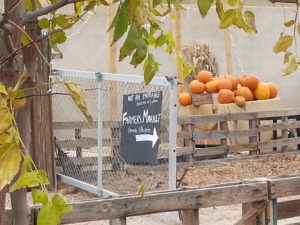 for pumpkin seeds is a treat for wildlife. According to the National Wildlife Federation’s blog, birds, squirrels, foxes and deer like to snack on both pumpkin seeds and pumpkin flesh. Visit the blog at https://blog.nwf.org/2014/10/how-to-recycle-halloween-pumpkins-for-wildlife/ for more ideas.
for pumpkin seeds is a treat for wildlife. According to the National Wildlife Federation’s blog, birds, squirrels, foxes and deer like to snack on both pumpkin seeds and pumpkin flesh. Visit the blog at https://blog.nwf.org/2014/10/how-to-recycle-halloween-pumpkins-for-wildlife/ for more ideas.
FEED PETS AND LIVESTOCK
Pumpkin is a healthy treat for many animals. It’s a good source of fiber and vitamins, and has digestive benefits. Birds (including poultry,) goats, dogs, cats, reptiles and rodents can all benefit from eating pumpkin. Do some research online or talk to your vet to learn the best ways to offer pumpkin to your pets. Note that pumpkins decorated with paint or glitter should not be fed to animals due to the potential for toxicity.
It’s not just vertebrate animals that love pumpkin. Worms and other soil creatures love them, too! Add small bits of pumpkin to your vermicompost bin and larger pieces in a compost pile. To prep a pumpkin for composting, remove candles and decorations. Break the pumpkin into pieces and toss them into the compost pile or worm bin.
SAVE THEM FOR THANKSGIVING
When the ghosts and goblins have gone home and the festivities are over, hang on to your uncarved pumpkins. They can last for several months in cool storage before they start to rot.
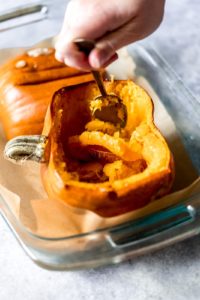 EAT THEM
EAT THEM
Pumpkin is a wonderful ingredient for many kinds of recipes. Perhaps the first culinary use that comes to mind is pumpkin pie. It’s simple to make your own pumpkin puree for pie and to add to soups, smoothies, breads and other recipes. Pumpkin puree is also a delicious way to add fiber and vitamins to sauces, batters and baked goods.
Homemade puree tastes better and costs less than the canned version. Substitute the same amount of homemade puree as canned in recipes.
Here’s how to make the puree:
- Start by cutting a pumpkin in half and removing the seeds and pulp.
- Brush the cavity with olive or vegetable oil and sprinkle the flesh with kosher salt.
- Line a cookie sheet or pan with parchment paper. Lay the pumpkin cut-side down on the pan. Roast for 30-45 minutes in a 400 degree F oven. The pumpkin is done when a knife or fork easily pierces the skin. It’s okay if the skin turns black and bubbles.
- Remove pumpkin from the oven and allow to cool for one hour.
- When the pumpkin is cooled, use a spoon to remove the flesh from the skin.
- Puree the flesh in a blender or food processor until smooth.
- Store the puree for up to one week in the refrigerator, or for several months in the freezer.
Note: Don’t skip lining the pan with parchment. Pumpkins release liquid that cooks down into a sticky substance that adheres to pans, making them difficult to clean. The parchment can provide some protection. Larger pumpkins can release enough liquid to overflow a cookie sheet. If necessary, use a turkey baster to periodically remove excess liquid.
Pumpkins come in many sizes and types, all of which can be pureed. Large field pumpkins (carving pumpkins) tend to have a high water content and little flavor, making them undesirable pie filling. The flesh is useful for savory recipes and to sneak into sauces and batters. Smaller pumpkins, sometimes referred to as ‘pie pumpkins,’ have meatier flesh and better flavor for baking.
WHEN ALL ELSE FAILS, DONATE THEM

If you don’t want to cook them or leave them in your yard for wildlife, you could donate them to a food pantry. Or try contacting local zoos, animal shelters, farms or community gardens. Many will take them off your hands to use as animal feed or for compost.
With so many different ways to use leftover pumpkins, you can keep yours from ending up in the trash this year.
